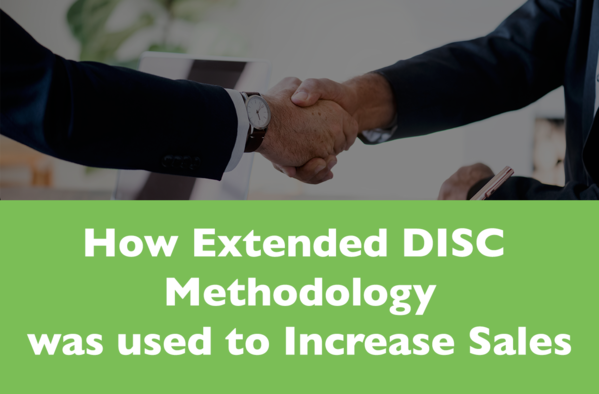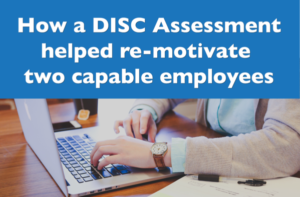One of our consultants recently completed a training programme for the sales team of a large manufacturing company. The organisation had been using Extended DISC® in recruitment for several years and had already experienced the accuracy and reliability of the assessments. Because of this positive experience, the company welcomed the consultant’s suggestion that the sales team could benefit from a stronger working knowledge of Extended DISC® methodology.
Each member of the sales team completed the online questionnaire and received their Extended DISC® Behavioural Assessment prior to attending the training session.
The training programme was based on one of our standard “Sales and Communication” PowerPoint presentations and was delivered over a six-hour workshop. The session included the following topics:
- Background information on Extended DISC
- Understanding the four basic behavioural styles (D, I, S and C)
- Interpreting their own assessment results
- Recognising the behavioural styles of customers
- Communication styles and preferences
- Listening styles
- Adjusting communication and selling approaches
- Understanding buying motivations across the four styles

Immediate Results
The impact of the training was clear. Communication among team members noticeably improved, morale increased, and the sales team became more focused and aligned. The sales manager reported that sales increased by 11% in the first month, followed by another 1.5% increase in the second month.
As a result, the company has now integrated the Extended DISC® System into its core training programmes.
Why Understanding DISC Styles Makes a Difference
People naturally communicate, listen, and respond in different ways. When salespeople understand both their own style and the preferences of their customers, they can adapt their approach for better outcomes.
For example:
- When speaking with a C style customer, a D style salesperson must slow down, be patient, and provide thorough information.
- When selling to a D style customer, an I style salesperson should minimise small talk, get straight to the point, and avoid overly emotional selling.
Understanding these adjustments can transform sales performance.
What Is the Ideal Behavioural Style for a Salesperson?
The ideal style depends on the selling environment:
- D characteristics: best for tough competition, direct one-off selling, and price-driven environments
- I characteristics: suited for relationship selling, conceptual products, and new account development
- S characteristics: ideal for long-term accounts, customer service roles, and ongoing support
- C characteristics: preferred for technical selling, expert advisory roles, and information-driven sales
Everyone can sell, but each style brings natural strengths suited to specific situations. Extended DISC® helps organisations find the right people for each role.
Want to Increase Sales Through Behavioural Insight?
Teach your sales team how to recognise customer styles and adjust their approach with Extended DISC® training for immediate performance improvement.







